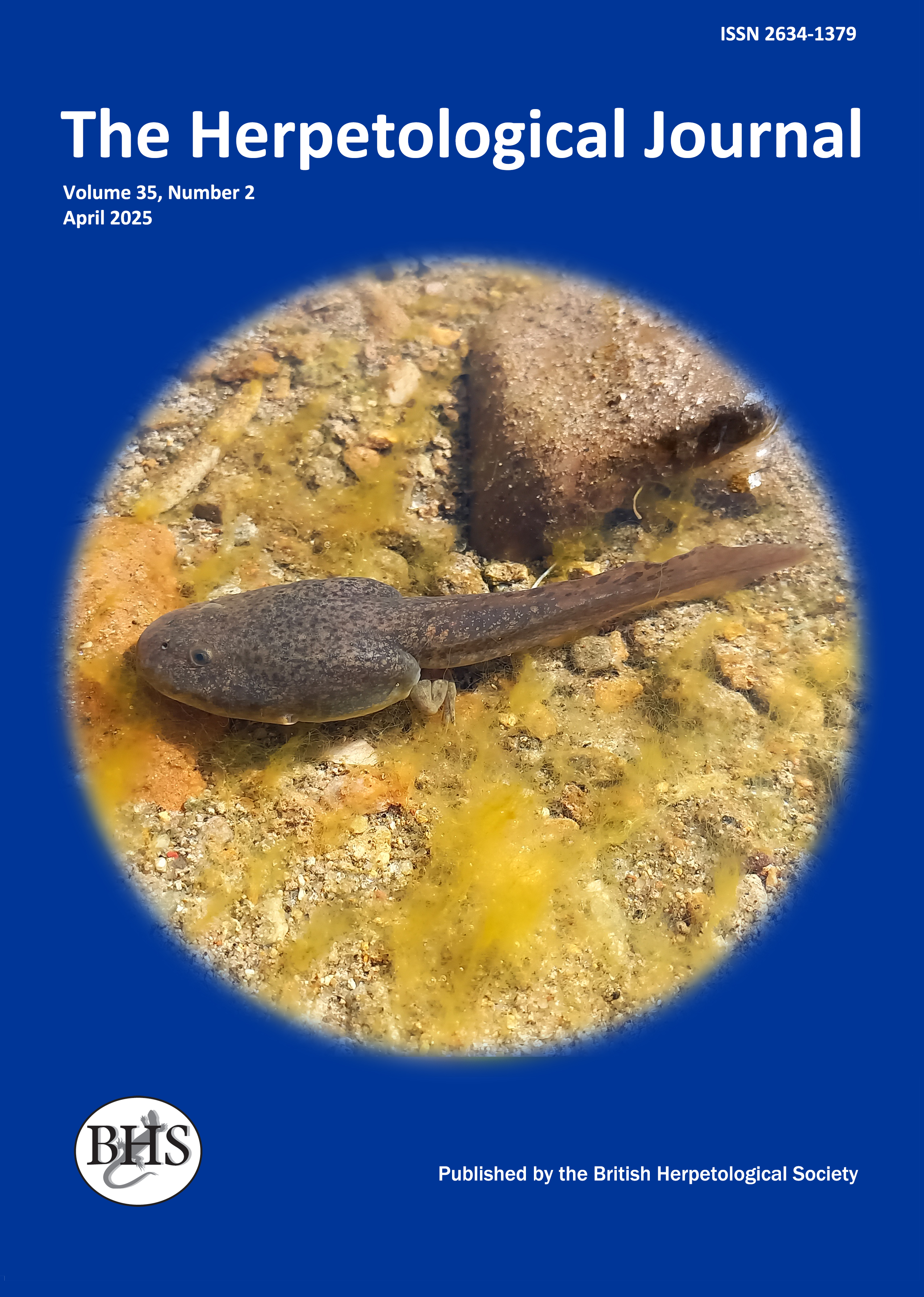
The Herpetological Journal
The Herpetological Journal is the Society's prestigious quarterly scientific journal. Articles are listed in Biological Abstracts, Current Awareness in Biological Sciences,Current Contents, Science Citation Index, and Zoological Record.
ISSN 0268-0130
2021 Impact Factor from Clarivate for the Herpetological Journal is 1.194, an increase of 0.332 from 2020.
pdf 01. Throat colour polymorphism in relation to sex and body size of the Litter skink Lankascincus fallax
26 downloads
Subscription / purchase required
DOI: https://doi.org/10.33256/35.1.18
pp. 1-8
Authors: J.M.A. Ishara K. Jayamanna, Anslem de Silva & Kanishka D.B. Ukuwela
Abstract: Colour polymorphism is a pervasive phenomenon in both the animal and plant kingdoms and understanding its evolution and maintenance is of great interest. Among the lizards of Sri Lanka, the endemic skink Lankascincus fallax shows throat colour polymorphism in which the underlying basis is not clearly known. In this study, we examined the relationship of the three different throat colour morphs observed in this species with sex, body size and geographic location. Live skinks were sampled from two locations in Sri Lanka and sex and throat colour were categorised visually and the snout-vent length (SVL) was measured. Tail tips of some selected individuals from the two locations were taken and a fragment of the 12S rRNA gene was sequenced in representative individuals having different throat colour morphs. Pairwise genetic distance of the three colour morphs ranged between 0.4–0.5%, confirming that the three colour morphs were the same species. The three throat colour morphs (red, black and white) were observed in males in both locations, while the females only had the white morph. This suggests that throat colour in this species is linked to sex and that the throat colour polymorphism was confined to males. There was a significant difference between the mean SVL of males with red and black throat colours (39.36 mm) and males with white throat colours (31.93 mm), suggesting that the throat colour is associated with the body size in males. However, future studies are necessary to understand the underlying drivers for the presence and maintenance of sexual dichromatism and throat colour polymorphism in L. fallax.
Keywords: DNA-barcoding, colour polymorphism, geographic variation, sexual dimorphism, sexual dichromatism

